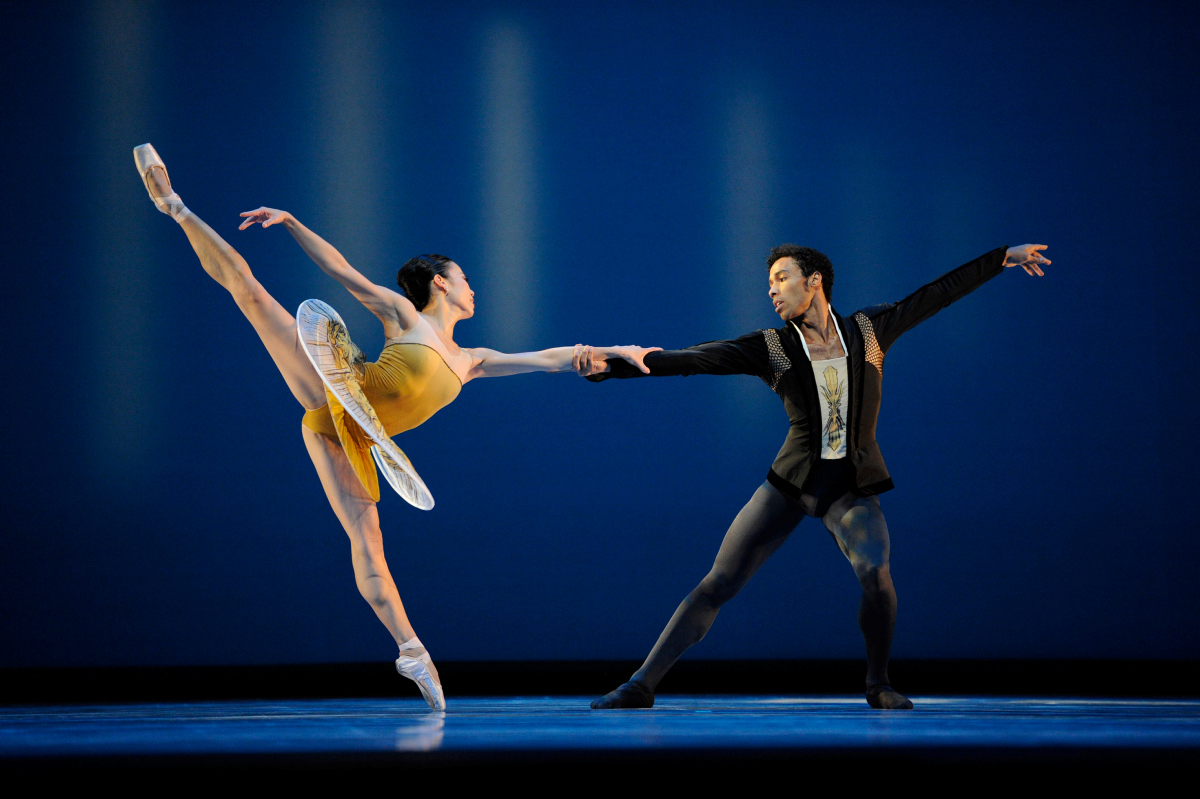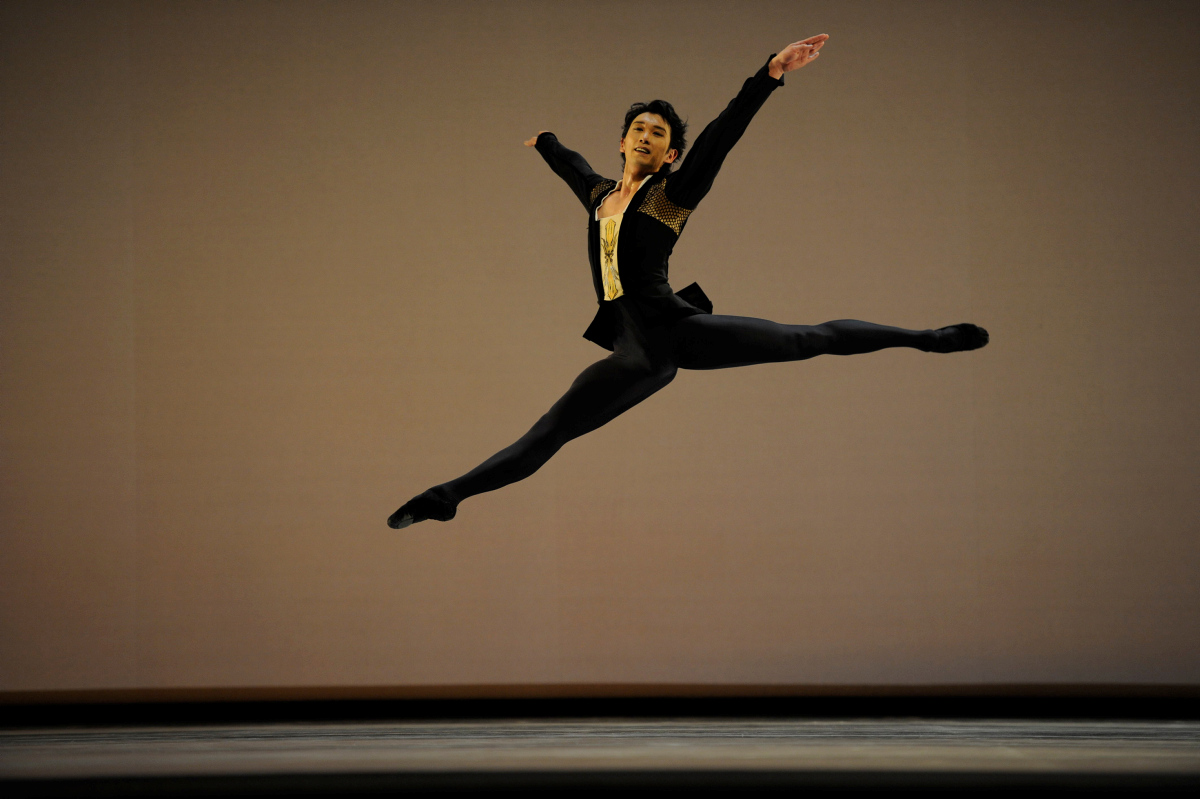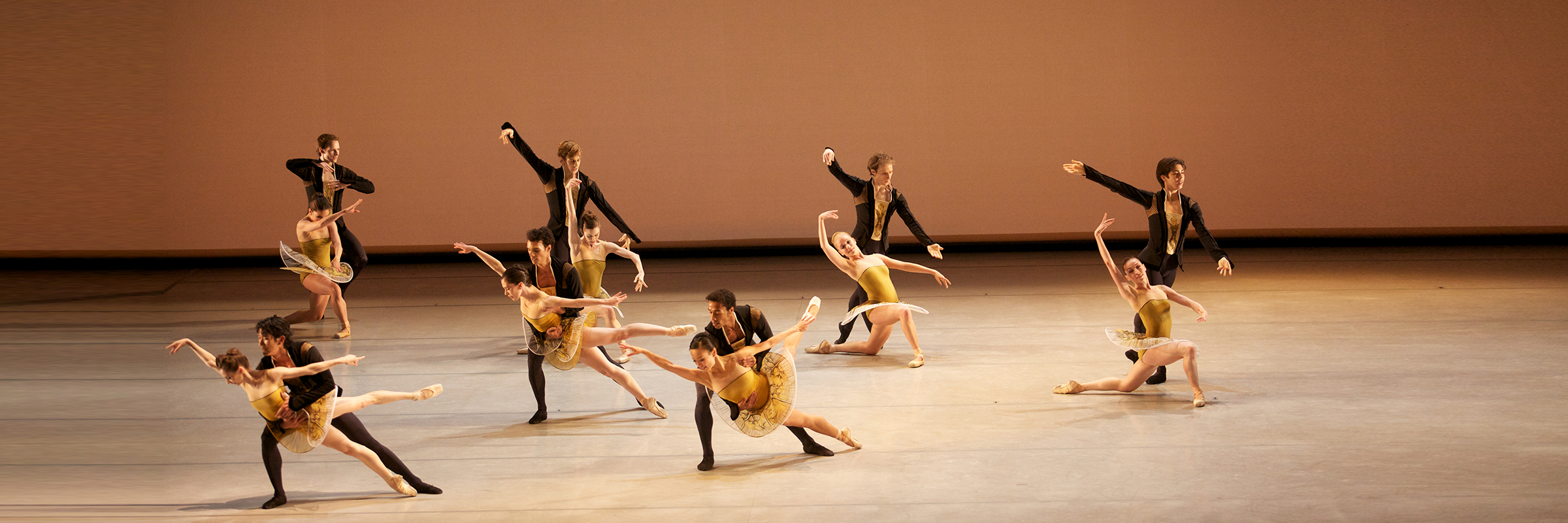About Yuri Possokhov’s Classical Symphony
“Someday, I’d like to do a ballet to this music.”
For Classical Symphony, Choreographer in Residence Yuri Possokhov tapped into reservoirs of emotion and memories of his boyhood at Moscow’s Bolshoi Ballet Academy. Though he described it as “just dance” during rehearsals, this ballet bears a dedication to Peter Pestov, the most beloved and respected of Possokhov’s ballet teachers. Classical Symphony, the choreographer says, is a “dedication to my school, to my teacher, my background.” Created for the 2010 Repertory Season, it was Possokhov’s 11th commissioned piece for SF Ballet.

Possokhov worked with Pestov for the last three years of his training. Pestov, who died in 2011, trained dozens of notable ballet dancers, including Alexei Ratmansky (former Bolshoi Ballet artistic director and current resident choreographer of American Ballet Theatre) and Vladimir Malakhov (formerly artistic director of Berlin State Opera Ballet and principal dancer at ABT). Possokhov says, “Our teacher is not just a coach in the studio. For us, he is like a father. He always fed us if we had nothing to eat; he always educated us; he brought us to museums. That’s why we love him—because it was a special time for us.”
Possokhov links Classical Symphony to his school years and to Pestov in small, personal ways. He first heard the music, Sergei Prokofiev’s Symphony No. 1 in D Major “Classical Symphony,” when Pestov gave it to him. Years later, after he began choreographing, Possokhov thought he would create a ballet to this music “someday, somehow. It’s like I had to do this ballet to this music and dedicate it to my teacher,” the choreographer says.
The Russian-born Prokofiev, one of the major composers of the 20th century, studied at the St. Petersburg Conservatory. Critical of current practices, he began experimenting with dissonance and unusual time signatures, earning a reputation as the music world’s enfant terrible. He modeled his “Classical Symphony” on the style of Franz Joseph Haydn, writing it as Haydn, who died in 1809, might have had he lived into the 20th century. Writing for a classical orchestra (two each of flutes, oboes, clarinets, bassoons, horns, trumpets, plus tympani and strings), Prokofiev paid homage to the classical form, but added new ideas.
Just as Prokofiev forged into neoclassicism, so does Possokhov with Classical Symphony, particularly in the second musical movement. Traditional ballet steps don’t include torso undulations and floor work, but in Possokhov’s hands they seem as natural and organic as if a 19th-century choreographer had thought of them. And shades of the neoclassical influences of George Balanchine can be seen in Possokhov’s changeable patterns, flow of dancers on and off the stage, and use of space.

In his treatment of the third movement, a gavotte that Prokofiev used later in his Romeo and Juliet, Possokhov again moves in an unexpected direction. It’s precisely because of the gavotte’s familiarity that he chose to approach it in a way that might surprise viewers. Once again, memories of his childhood fueled his imagination. “I always liked to watch birds; swallows, I think,” the choreographer says. “Sometimes they are together, changing directions, plunging.” In this men-only section he sends the dancers leaping and banking in distinctly birdlike fashion.
In making a tribute to Pestov, Possokhov shows his respect not only for his teacher but also for classical ballet training. He wanted to give Classical Symphony a feeling of nobility, he says, because to him, those who are trained in classical ballet are “rare dancers. It’s like opera—many people sing, but opera singing is unique.” Too often, he says, “you have to wait for a full-length ballet to see if [someone is a] good classical dancer. So this ballet is also a dedication to artists who should be seen in what they learned for many, many years.” Along with its surprises for the audience, Classical Symphony held one for its creator. Possokhov found unexpected creative choices in Prokofiev’s music. “After making this ballet,” he says, “I thought that it won’t be my last ballet with a classical vision.”
Program notes by Cheryl A. Ossola
Header Image: San Francisco Ballet in Possokhov’s Classical Symphony // © Erik Tomasson








